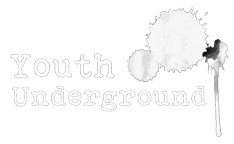AN ILLICIT GLOBAL TRADE
—
What is human trafficking?
Human trafficking is the second fastest-growing activity of transnational criminal organizations. The official definition of human trafficking is the act of recruiting, harboring, transporting, providing or obtaining a person for compelled labor or commercial sex acts through the use of force, fraud or coercion. In its simplest definition, however, human trafficking is the selling of a human being to make money. But human trafficking is a lot more than that. It is a global trade in which a human being becomes a commodity. It affects all sectors of society with the primary targets worldwide being the youth, including children well below their teens. It is important to note that human trafficking can include, but does not require movement. A person can be a victim of human trafficking in his or her hometown. At the heart of human trafficking is the traffickers’ goal of exploitation and enslavement.
What are the different types of human trafficking?
Trafficked people are held against their will through acts of coercion, and forced to work for or provide services to the trafficker or others. The work or services may include anything from bonded or forced labor to commercial sexual exploitation. The arrangement may be structured as a work contract, but with no or low payment, or on terms that are highly exploitative. Sometimes the arrangement is structured as debt bondage, with the victim not being permitted or able to pay off the debt. Sexual exploitation and forced labor are the most commonly identified forms of human trafficking. Approximately 71% of the victims are female – women and girls. Many other forms of exploitation are often thought to be under-reported. These include domestic servitude and forced marriage; organ removal; and the exploitation of children in begging, the sex trade, and warfare (child soldiers).
How profitable is human trafficking?
Human trafficking is among the worst human rights violations. Due to its low costs and huge returns, it has become the 2nd largest international criminal industry after the arms trade, generating tremendous profits of an estimated US$ 150 billion per year, according to the ILO. The average cost of a human trafficking victim today is $90 whereas the average slave in 1800 America cost the equivalent of $40,000. Two-thirds of that money comes from commercial sexual exploitation, while the rest is from forced economic exploitation, including domestic work, agriculture, child labor and related activities. The following is a breakdown of profits, by sector: $99 billion from commercial sexual exploitation, and $34 billion in construction, manufacturing, mining and utilities.
What causes human trafficking?
The causes of human trafficking are complex and interlinked, and include economic, social and political factors. Poverty alone does not necessarily create vulnerability to trafficking, but when combined with other factors, these can lead to a higher risk for being trafficked. Some of those other factors include: corruption, civil unrest, a weak government, lack of access to education or jobs, family disruption or dysfunction, lack of human rights, or economic disruptions. Last but certainly not least – for the victims, the quest for a better life and/or love; for the traffickers, money and power. You might have heard of human trafficking being referred to as “the game.” The game here is the power relationship between victim and trafficker.
Where does human trafficking happen?
Every continent in the world has been involved in human trafficking. Human trafficking is both a domestic and global crime, with victims trafficked within their own country, to neighboring countries and between continents. Victims of trafficking can be of any age and any gender. Women and children are often used for sexual exploitation, while men are more likely to be used for forced labor. Globally, about one in five victims of human trafficking are children. Children are also exploited for the purposes of forced begging, child pornography or child labor. Their smaller hands may also be used in tasks like sewing or untangling fishing wire. We often hear people referring to human trafficking as happening “over there, far from where I live.” But there is nothing called “over there” when one is talking about human trafficking. It is a crime that happens in all countries, including the richest nations of the world.
Human trafficking is "modern-day slavery"
Although some 200 years have passed since the abolition of the transatlantic slave trade, slavery, as we know it, has still not ended. Instead, it has evolved and exists today under a different form – that of human trafficking, which is also referred to as “modern-day slavery”. In fact, there are more slaves at work today than there have ever been at any point in history. The victims are either kidnapped or enticed under false pretenses, then held against their will. Many of them are forced to work long hours, under terrible conditions and without pay. Others are beaten, sexually abused, locked away or starved into submission. Victims of human trafficking are hidden from view. They will not be recognized in the back kitchens, shops, gas stations, and in hospitality. They are also tucked away in fields. Out of fear and shame, they do not come out and ask for help. They are not in shackles or on plantations. People are coerced into harsh employment under horrible conditions, and then have no freedom to leave. They are beaten, violated and told they are worthless – that they are not wanted by anyone.
Awareness-raising & education
Raising awareness and educating people about human trafficking are a collective responsibility. There is a lot of misinformation and misunderstanding about human trafficking, including denial of the scope and nature of the crime. This is due to continued challenges such as the definition of what human trafficking is, lack of data since it is a hidden crime, failure to consider the labor-exploitative aspect of trafficking, poor understanding of the manifestation of the crime at the local level, and a lack of capacity to address the issue at all levels. It is also because human trafficking is an undercover crime that people do not always recognize and have trouble identifying the signs. The covert nature of this activity, and the frequent shame that victims feel should they come forward, make it even more challenging to obtain accurate facts and figures. Victims are often afraid they will be judged and blamed for having been trapped in trafficking – although abuse and human trafficking are never a victim’s fault.
What are we, at Youth Underground, doing against human trafficking?
It is inconceivable for many to imagine that the buying and selling of human beings is actually a profitable trade that happens all over the world. You may not see the problem. But it is there. It is estimated there are 40.3 million human trafficking victims worldwide. This is not something that occurs only in dark alleys in the far corners of the world. It is happening in all countries every day. This is why Youth Underground’s focus is education in all its aspects, so that there is an understanding that human trafficking is a crime that cuts across gender, race, social status, religion and borders. And through education, we can all do something to prevent it.

